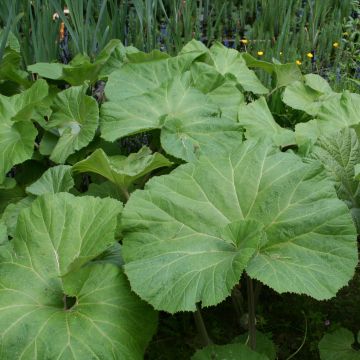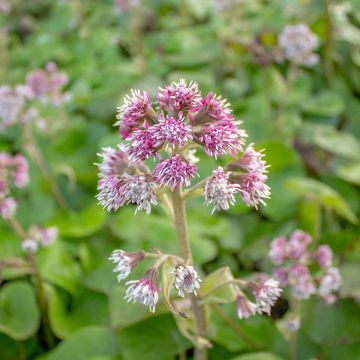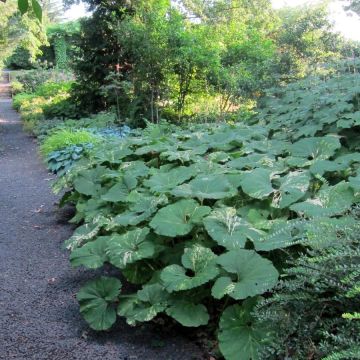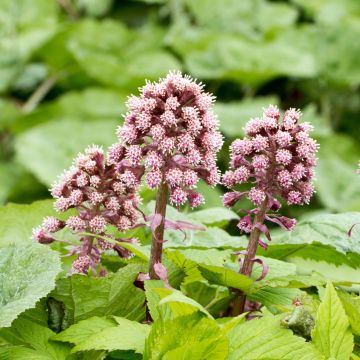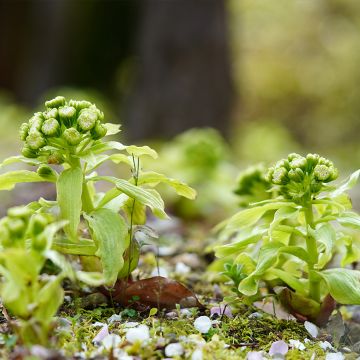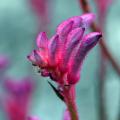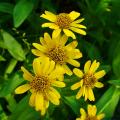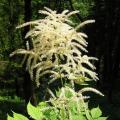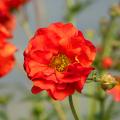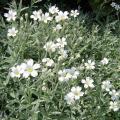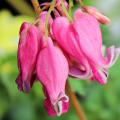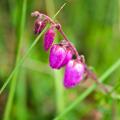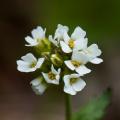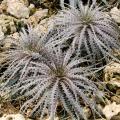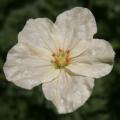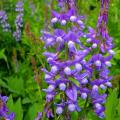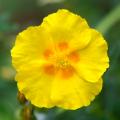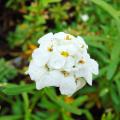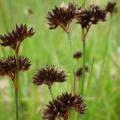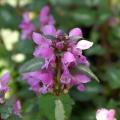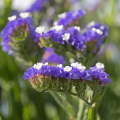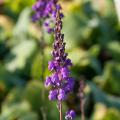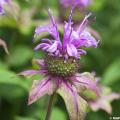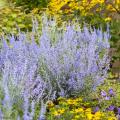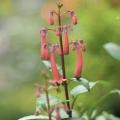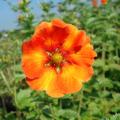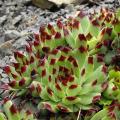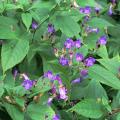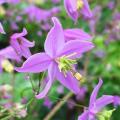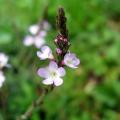Petasites
Does this plant fit my garden? Set up your Plantfit profile →
Available in 1 sizes
Available in 1 sizes
Available in 1 sizes
Available in 1 sizes
Available in 1 sizes
Petasites, or butterburs, including Petasites hybridus, are medicinal, herbaceous, perennial and hardy plants of the Asteraceae family, which thrive in moist and shaded areas, such as the edges of ponds or water points and very fresh undergrowth. They spread and spread rapidly through wandering rhizomes and develop very large leaves, forming lush ground covers, sometimes invasive, like the giant Japanese butterbur (Petasites japonicus var. giganteus). Their spring flowering, which takes the form of upright conical inflorescences, pink or white-yellow, sometimes offers pleasantly vanilla scents, especially in the case of Petasites fragrans. They usually appear before the leaves, which are the main asset of Petasites. They are hardy plants that tolerate temperatures below -15°C (5°F) and thrive in soils without excessive limestone, preferably clayey, neutral to acidic, never drying out. Petasites works wonders on the banks of a pond. We also like to associate it, in a humid undergrowth, with Snowdrops, Solomon's Seals, but also with already well-established peonies.
Haven't found what you were looking for?







































